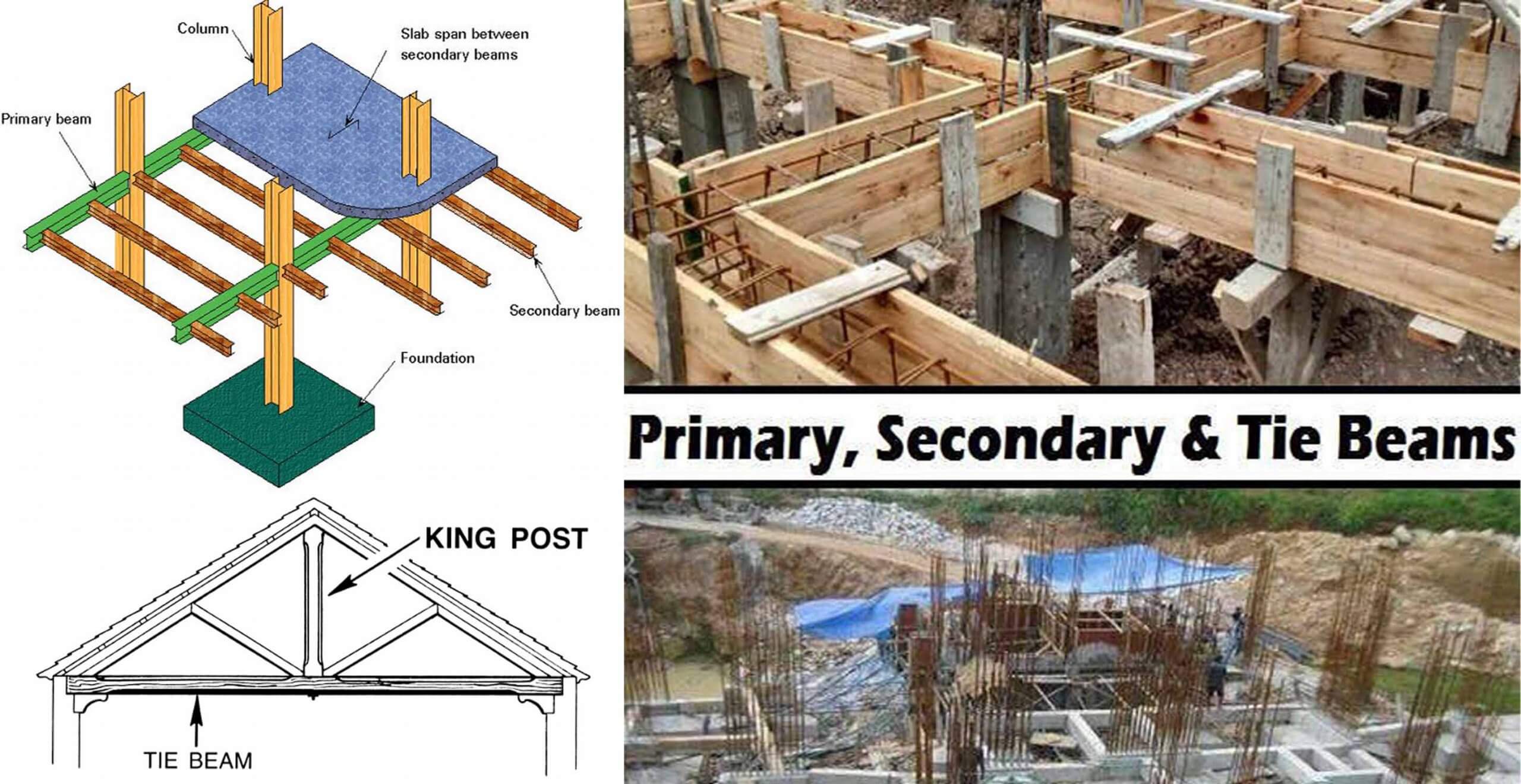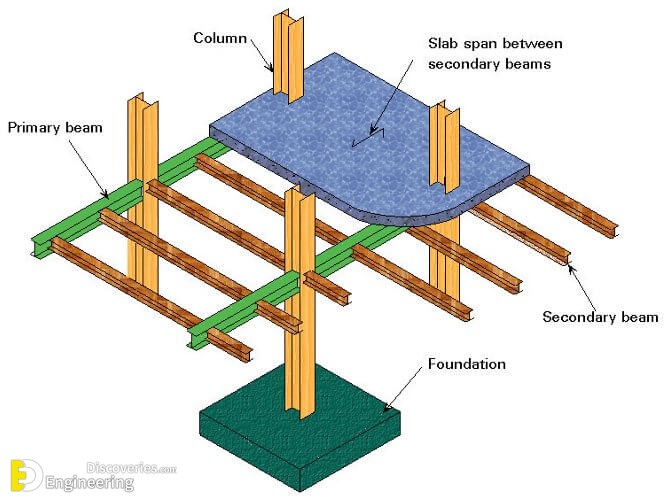The beam is one of the most important structural parts of a building. In this article, we will discuss the differences between primary, secondary and tie beam.
Primary Beam
The beams that are connecting columns for transferring loads of a structure directly to the columns are known as primary beams. Usually, primary beams are shear connected or simply supported and they are provided in a regular building structure. The depth of the primary beams is always greater than the secondary beams. Primary beam act as a medium between columns and secondary beams.
Function: It will transfer the load from the secondary beam(if present) to the columns.
Secondary Beam
The beams that are connecting primary beams for transferring loads of a structure to the primary beams are known as primary beams. These beams are provided for supporting and reducing the deflection of beams and slabs.
Function: It will transfer the load to the primary beam and not directly connected to the columns.
Tie Beam
The beams that are connected by two or more rafters in the roof or roof truss for stiffening the whole building structure, known as tie beams.
Function: This beam will transfer the rafter’s load to the column of the structure. Usually used in a roof truss.



